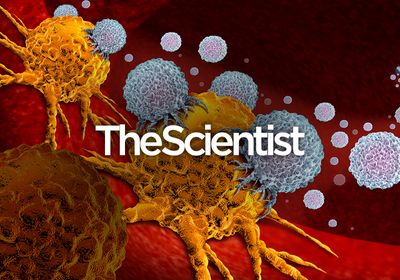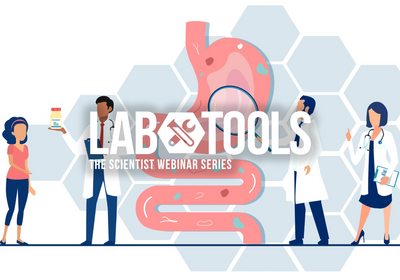ABOVE: ©ISTOCK.COM, Rattankun Thongbun
When he started graduate school at the Massachusetts Institute of Technology (MIT), Matt Kaeberlein was planning to study structural biology. In his first semester, however, he went to a lecture by MIT biologist Leonard Guarente, which sparked his interest in the biology of aging. Kaeberlein has been hooked ever since.

Today, Kaeberlein is a biogerontologist at the University of Washington. In 2014, Kaeberlein, Daniel Promislow, another University of Washington aging researcher, and Kate Creevy, a veterinary internist at Texas A&M University, founded the Dog Aging Project. So far, researchers have enrolled more than 44,000 dogs and begun gathering data on lifestyle, lifespan, and age-related diseases, including those related to heart and brain health. While a large part of the project is observational, Kaeberlein is also exploring whether a drug called rapamycin can extend lifespan in healthy older dogs. The team hopes that the Dog Aging Project will provide important insights into aging processes shared by dogs and humans, while also helping pets live their healthiest, happiest lives.
How did the Dog Aging Project begin? Why were you interested in studying dogs specifically?
During graduate school, I studied aging in yeast. Yeast is a single cell — it's one of the simplest organisms that we study. Then, as a postdoctoral researcher, I started working in the nematode Caenorhabditis elegans, which is a simple invertebrate animal model. Later, I started to work with mice as well, working my way up the evolutionary ladder.
All of my studies on aging had been in laboratory organisms. There are a lot of benefits to doing studies in the laboratory; we can very precisely control everything and minimize variation. However, we don't always know whether what we study in the laboratory is going to translate into the real world.
In 2013, Promislow and I started directing a summer course at Woods Hole Laboratory on the biology of aging. He had already started thinking about dogs as models for understanding the biology of aging. The idea really appealed to me. I've always been a dog person. Dogs age more rapidly than people do; this presents an opportunity to really understand the biology of aging in a reasonable timeframe. Unlike laboratory animals, pet dogs share every aspect of our environments except for diet. It occurred to me that we might also be able to improve quality and quantity of life for pet dogs. Once I had that realization, I felt like I had to do it.
To me, there's intrinsic value in increasing healthy longevity in dogs, independent of what we're eventually going to learn about human aging. However, there are many parallels between aging in dogs and aging in people. I believe that a lot of what we learn about drugs and environmental factors that influence aging in dogs will translate to humans and influence human longevity.
Why did you want to study the effects of rapamycin on aging?
A few things consistently modulate the biology of aging. Caloric restriction is one of the best, but rapamycin is the most effective and reproducible small molecule for increasing lifespan and healthspan in laboratory animals. It isn’t reasonable to try a 30 percent caloric restriction trial in pet dogs, and the risks associated with caloric restriction are likely bigger than the risks associated with rapamycin.

From studies in mice, we knew that we could start the rapamycin treatment in middle age and still get most of the benefits, which is important for a translational clinical trial. If we started treating mice with rapamycin in middle age, we saw some functional improvement within a few months. By looking at an echocardiogram, the immune system’s response to a vaccine, or inflammation in the mouth, we saw improvements over a period of about six to twelve weeks.
We were fortunate that the Comparative Oncology Trials Consortium (COTC) had already started a clinical trial with rapamycin for osteosarcoma, so we already knew something about dosing, safety, and side effects in dogs before we started. In some ways, this trial is similar to a pediatric clinical trial; many people feel about their dogs the same way they feel about their kids, so we absolutely have to make sure that we've got a good handle on what the risks are and ensure that there's a low likelihood of significant harm.
What are some possible mechanisms by which this drug could promote healthy aging and longevity?
Rapamycin has a really interesting backstory. It is produced by bacteria called Streptomyces hygroscopicus that was found in the soil on Easter Island, which is also called Rapa Nui. That's where it gets its name.
It was initially studied for antifungal and anticancer effects because when researchers put rapamycin on either yeast cells or mammalian cells in culture, it was a potent antiproliferative. In other words, it shuts down the cell cycle. Researchers next wanted to figure out its biochemistry and found that it inhibits a protein called mTOR. The protein was actually named after the drug: mTOR stands for mechanistic target of rapamycin.
This was all 25 to 30 years ago. In the intervening couple of decades, we have learned that mTOR is a central regulator of growth, development, and reproduction. As far as we know, it’s in every eukaryotic cell. In all of these species, it plays this same role of sensing the environment and helping the cell or the organism make a decision about whether the environment is appropriate to begin to grow and reproduce or if it should shut down growth and become stress resistant. Rapamycin turns down mTOR by indicating that the environment is a poor environment for reproduction.
How this affects aging varies between different animal models. Even in mammals, different downstream processes might be most important in different tissues and organs. In mammals, many of the healthspan benefits from rapamycin probably come from its ability to re-establish immune homeostasis in an aged animal.We often talk about how immune function declines with age, but that's really only half of the story. The immune system loses the ability to respond appropriately to external pathogens, like viruses and bacteria, but at the same time, there is an increase in immune activity towards self.
Autoimmune activity is one of the most consistent features of aging in every person. It turns out that rapamycin is quite good at knocking down that sterile inflammation. I speculate that knocking down that sterile inflammation allows the immune system to restore homeostasis.
What have you discovered in the early trials of rapamycin in dogs?
Our first study was a ten week, double-blind, randomized, placebo-controlled trial, to test for safety. The dogs were treated with two different doses of rapamycin. We also measured heart function, using the same three echocardiographic parameters that had improved in mice treated with rapamycin.
In the echocardiograms, we saw statistically significant improvements in two of the three parameters in dogs treated with rapamycin. The big outcome of that study was that we found no evidence for side effects in dogs treated with the drug. Also, the owners reported an increase in activity in the dogs that had received rapamycin.
The second clinical trial was at Texas A&M University and lasted for six months. We used half of the lower dose that was used in the first trial. In the second trial, we didn't see any changes in the echocardiograms. We did still have an owner reported increase in the dogs’ activity. Again, we saw no evidence of any significant side effects.
What are the next steps?
We’re working on the third clinical trial, which is the largest one. It’s called Test of Rapamycin in Aging Dogs, or TRIAD. This is a study of 580 dogs. Half will get the placebo; half will get rapamycin for one year, and we’ll follow up for two years afterward. The primary endpoint of this third clinical trial is lifespan. The length of the trial, the number of dogs, and the size and weight of the dogs will give us the statistical power to detect a nine percent change in lifespan.
We had just started this trial when the pandemic hit and all the veterinary clinics shut down except for emergencies. But now we're back up and running. I really hope that by the end of this calendar year, we'll have all 580 dogs randomized in the trial. In a year, we’ll finish the treatment period; then in two more years, we will unblind and find out all of the answers.

This story was originally published on Drug Discovery News, the leading news magazine for scientists in pharma and biotech.







